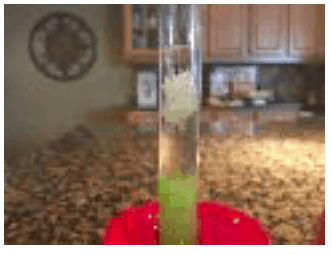Starting the DNA unit in biology each year in November is one of my favorite times of the school year! We start with a little introduction song to get us pumped up and also learn that the basic function of DNA is, well, to make protein! If you’re not sure about that, just check out this song.
DNA is amazing! This code of 3 billion base-pairs in each human cell is what directs the protein production and consequently makes us who we are!
To understand exactly what the structure of DNA is, biology students create a 12 base-pair model (the three billion base-pair model would just take too long). Students may use whatever materials they choose to craft the model, but the model must accurately follow the code given by the teacher and must be made of the nucleotide units that make up DNA. A DNA nucleotide contains one sugar, one phosphate, and one base. Since each nucleotide carries one base, that means there would be 24 nucleotides in this project containing 12 base-pairs.
Crafting this model is great fun and really helps a student to see how DNA is put together and how the code functions.
Let’s Make a DNA model!
Here are some DNA student models:
In this impressive model above, you can see the base-pairs clearly. They are the “rungs” between the sides of the model. The student also provides a key describing what colors are which bases. The red, in this model, is C (cytosine) which can only pair with G (guanine). This model looks so lovely, I hope that the student keeps it right on their bedside table!
The colorful model above shows us clearly the alternating deoxyribose sugars and phosphates that make up the sides of the “ladder”. One of the things I look for is that the student made sure that each base is attached to a deoxyribose sugar. Check!
This amazing model clearly shows us another characteristic of DNA – that the two sides are antiparallel. One side begins with a phosphate and ends with a sugar while the other strand begins with a sugar and ends with a phosphate. You can see at the top of this model that one side begins with a red foam ball (the phosphate) and the other begins with a white foam ball (the sugar).
Here’s one more fantastic student DNA model. Can you find the sugars, phosphates, and bases?
Now Let’s Actually Extract Some Real DNA!
Once students have learned about the structure and function of DNA, we prove that DNA really does exist in the nucleus of living organisms. In one of our coolest lab experiments, students extract actual DNA from a food source such as strawberries or split peas, etc.
Here are some pictures of the DNA students extracted. The DNA is the white foamy stuff at the top of the test tubes. This white stuff is a very large amount of DNA strands all stuck together. You obviously would not see the twisted ladder structure since that would require a very powerful microscope!
This student used strawberries and was quite successful at extracting lots of DNA.
This student also successfully extracted DNA, but from bananas.
And this student got lots of DNA from broccoli.
It’s always so much fun getting to see real DNA and learning how absolutely amazing DNA is!
If you’d like to learn more about my biology class or other classes, you may see my teacher pages here: https://excelsiorclasses.com/debbie-stokes/
About the Author
Debbie Stokes has been teaching science classes since 1991 and still finds great awe in how beautifully and intricately the Creator designed all things. She finds it a great privilege to journey through the “study of life” with students!
Debbie graduated cum laude from Kennesaw State University in 1991 with a B.S. in biology. She soon after earned her M. Ed. in science education from Georgia State University. Debbie taught high school science classes in the public school system of Cobb County, Georgia for sixteen years and has taught science classes online since 2011. She describes her teaching style as a combination of passion for the subject matter mixed with creativity and fun.











